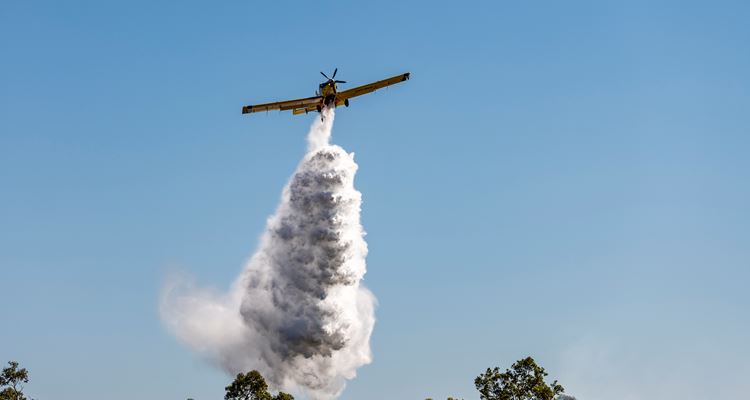Aerial firefighting crews protecting communities during harvest

Farming communities are receiving protection from above this harvest, with waterbombing aircraft based in grain-growing regions providing a rapid response to crop fires.
After a successful pilot program in 2021, two aerial strike teams are once again based in agricultural areas for the hottest and most fire-prone stretch of the State’s grain harvest, boosting response times across WA’s nine million hectare grain growing region, a land area almost the size of Victoria.
The first strike team started in Geraldton on 19 October, dropping more than 88,000 litres of water and suppressant on four large fires at Eganu, Howatharra, Allanooka and Beekeepers Nature Reserve.
As harvest swung into gear further south, the second team commenced in Narrogin in late November. The teams will be moved to different operating bases in the Wheatbelt as the harvest progresses, or if response to active fires requires it.
Each strike team comprises a five-person crew, two fixed-wing waterbombers, an air attack supervision aircraft and a fuel truck that can be deployed to assist ground crews.
The aircraft can cruise at a speed of 350km/h, can drop up to 3150 litres each and need just minutes to refuel and reload.
Fire and Emergency Services Commissioner Darren Klemm AFSM said crop fires were often sparked by machinery or lightning and when combined with dangerous weather conditions could escalate quickly.
“Crops provide an easy source of fuel for fires to take hold and this strategy is about supporting firefighters on the ground in the initial stages of fires,” he said.
“This strategy proved extremely successful last year, dropping more than 390,000 litres of water and retardant to suppress flames and prevent fires from spreading, providing crucial support for farmers and firefighters on the ground.”
CBH Group Chief Operations Officer Mick Daw said the extra firefighting resources for the Wheatbelt were welcomed.
“The safety of our growers, our employees and their communities is our top priority,” he said.
“Many of our growers and team members are also bushfire service volunteers and the fire season can add extra pressure during the already busy harvest season.
The program is funded by the Department of Fire and Emergency Services, with support from the Department of Biodiversity, Conservation and Attractions and Department of Primary Industries and Regional Development.

